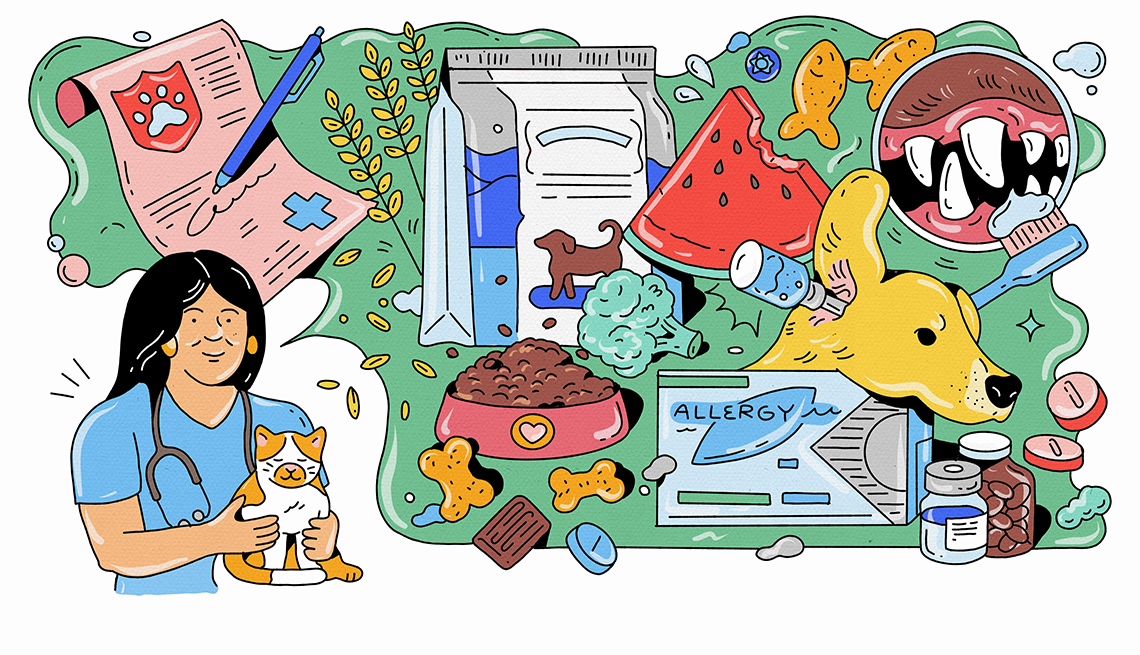AARP Hearing Center


Dogs and cats give us so much joy and can provide physical, mental and emotional benefits, so it's only natural that we pet owners want the best for them. And we’re in good company — 51 percent of all pet owners are either Gen Xers or Baby Boomers, according to a 2024 survey by the American Pet Products Association.
But even experienced pet owners sometimes have questions about the ins and outs of proper daily care. To help, Lesley Kovar, the 2023 Washington State Veterinarian of the Year, shares insights she’s gleaned from more than 30 years of caring for dogs and cats at Bothell Pet Hospital in Bothell, Washington. Here in her own words, she shares 15 tips.
Look past the marketing on pet food
Pet food companies have enormous marketing budgets. And just because they say their food is the best doesn’t mean that it is. Pet owners should really dive into the science behind what makes a good dog or cat food. You want to pick a food that’s right for your specific pet. If it’s a large dog, there’s large-breed dog foods. If they’re overweight, there's weight-management foods. Start by reading the ingredients label. The primary source of protein — usually chicken, beef or pork — should be at the top. Also, look for a statement on the bag saying the food satisfies nutritional standards set by the Association of American Feed Control Officials, or AAFCO.
Consider a grain-inclusive diet
A grain-free diet for pets was all the rage for quite a while, until researchers discovered within the last five years or so that there may be a link between grain-free foods and the development of a heart condition called dilated cardiomyopathy. And seeing as there’s no proven benefit to a grain-free food, why risk it? I recommend that all my clients feed their pets a grain-inclusive food.
Stop over-treating
Obesity is such a problem in our pets. People will come in, and I’ll say, “You know, your dog is 20 pounds overweight. What are you feeding him?” And they’ll say, “We’re feeding a cup of food twice a day.” Great. But you have to consider what else you’re giving your pet daily, including all the treats. Treats should be no more than 10 percent of a pet’s daily caloric intake. Often, if people are honest about what they’re really giving their pets and actually do the math, they’re feeding more like twice the recommended amount or more in treats a day.
Offer veggies and fruits instead
Watermelon can be good to offer to dogs, since it’s a good source of water. And I love to recommend green beans and broccoli as rewards, if your dog will eat them, because they’re really high in vitamins and fiber. You’ll feel like you’re giving your dogs a treat, but it’s something that’s low in calories and also good for them. For cats, ripe tomatoes — even the skin and seeds — are great. Just avoid tomato leaves and vines, and green ones.
Consider targeted medications for pet anxiety
Anxiety in our pets is such a big deal now, especially in many of the “pandemic dogs,” where people got pets during the pandemic while working at home. But now they’ve had to go back to work, and the pet’s anxiety is just huge. For specific, targeted events that you can predict ahead of time — like a vet visit or a night of fireworks — there’s a generic medication we recommend called trazodone. Pets take it about an hour before the stressful event, and it chills them out. For pets suffering from more long-term issues, like separation anxiety, we may have to turn to something like a daily dose of Prozac, or fluoxetine. Either way, there are steps we can take to help them.


































































You Might Also Like
Bow Wow Ow: Post-Surgical Rehab Isn't Just for Humans
Meet Aurora, who spent 12 weeks working to heal a damaged leg
AARP Smart Guide to Pet Adoption
33 tips for finding a new furry best friend after 50
How to Help Pets Through Grief
Here are practical tips to assist your furry friends while they’re depressed